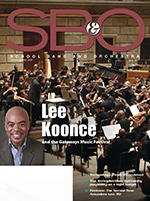Microphones appear in an almost endless variety of shapes, sizes, design types, and costs, but they all do exactly the same thing; convert acoustic vibrations (in the form of air pressure) to electrical energy so it can be amplified or recorded. There are different methods of mic construction to achieve this, and each one has a bearing on the sound.
There are three types of microphones, each with a different design philosophy and each with a different sound, which can sometimes make one type work better than another in certain applications. Let’s look at the differences.
The Dynamic Microphone
Dynamic mics can be made fairly inexpensively and can take a beating without breaking. If you play live you’re most likely already familiar with an excellent dynamic microphone; the Shure SM58, which has been a workhorse for live sound for more than 50 years.
A dynamic microphone gets its name from the fact that sound waves cause movement of a thin metallic diaphragm and an attached coil of wire that “dynamically” moves inside a permanent magnet to change acoustic energy into electronic energy. This construction gives the dynamic mic its robustness, but since the diaphragm is relatively heavy, it can’t respond to sound waves quickly, which means that it’s high frequency response is usually limited.
Dynamic Microphone Characteristics
- Robust and durable
- Can be relatively inexpensive
- Insensitive to changes in humidity
- Usually weak high-frequency response beyond 10kHz
Typical Dynamic Microphone Applications
- Sound reinforcement
- Snare drum miking
- Guitar miking
- Voice-overs and broadcast
The Ribbon Microphone
The ribbon microphone operates almost the same as the dynamic microphone but uses a strip of extremely thin aluminum foil as a diaphragm instead of a relatively heavy coil of wire. This means that it moves quickly in response to acoustic sound, which also means that it has great high frequency response as a result. The problem is that the foil is so thin that the mic has a weaker output signal than a dynamic as a result. Ribbon mics also have a smoother response than a dynamic since they don’t have a mid-range presence peak.
The biggest downside to using ribbon mics is that they’re fragile because of how thin the aluminum diaphragm is. The air blast from a vocal, kick drum, or even slamming the protective case will pop it so fast that you won’t even realize it until it’s too late.
Ribbon Microphone Characteristics
- Relatively flat frequency response
- Better high frequency response compared to dynamics
- Somewhat fragile and requires care during operation and handling
- Moderately expensive
Typical Ribbon Microphone Applications
- Drum overheads or cymbal miking
- Bass miking
- Piano miking
- Electric or acoustic guitar miking
- Brass miking
The Condenser Microphone
The condenser microphone works on the same principle as both dynamic and ribbon mics but takes a different approach. All condensers use two electrically charged plates, one that can move, which acts as a diaphragm, and one that’s fixed. Because the sound wave is varying an electric charge instead of moving a diaphragm through a magnet, it can respond faster and therefore have a better high frequency response and the ability to capture sounds with very quick attack times, like drums and cymbals.
Condenser mics come in what’s known as small diaphragm and large diaphragm versions. The small diaphragm versions have a single pickup pattern while the large diaphragm versions can have multiple pickup patterns. The small diaphragm versions also usually have a slightly lower frequency response while the large diaphragm versions have a presence peak in the 8k to 12kHz range, making them a favorite of vocalists.
One of the downsides to condenser mics is that, since they’re electronic in nature, they require either internal or external power to operate. Most condensers are powered either from a power source called Phantom Power, which can be found on all recording consoles and most preamps, or an external power supply. Most of the old vintage Neumann and AKG condenser mics actually used vacuum tubes inside (which is another reason why they were so large), which required a very large and expensive power supply as a result.
In the past, most condenser mics were very expensive, but today you can buy a small diaphragm condenser for less than $100 from a number of manufacturers. The problem with these cheaper mics is that the quality control isn’t that stringent so while it’s possible to get a great one, it’s also possible to get one that has the frequency response like a bumpy road filled with potholes. The trouble is, you never know what you’ll get. Try to listen to it before you purchase, or just save your money and buy a quality brand.
Condenser Microphone Characteristics
- Excellent low and high frequency response
- Good ones are somewhat expensive
- Requires external powering
- Large diaphragm models can be relatively bulky
- Low cost models can suffer from poor or inconsistent frequency response
Typical Condenser Microphone Applications
- Overheads or cymbal miking
- Drum miking
- Piano miking
- Acoustic guitar miking
- Vocal miking
- String section miking
The real key in choosing a microphone is getting the best type for the job. Buying one randomly can end up in a poor match that may provide adequate performance but not be optimized for your situation.




























